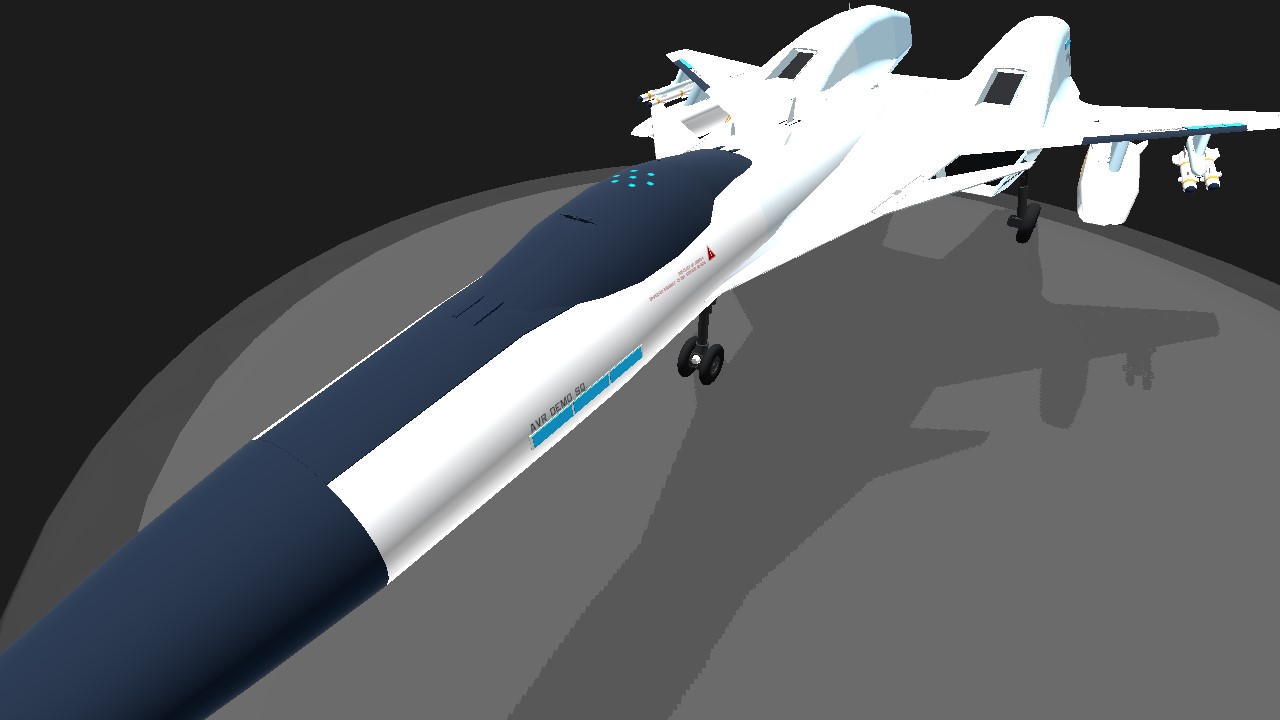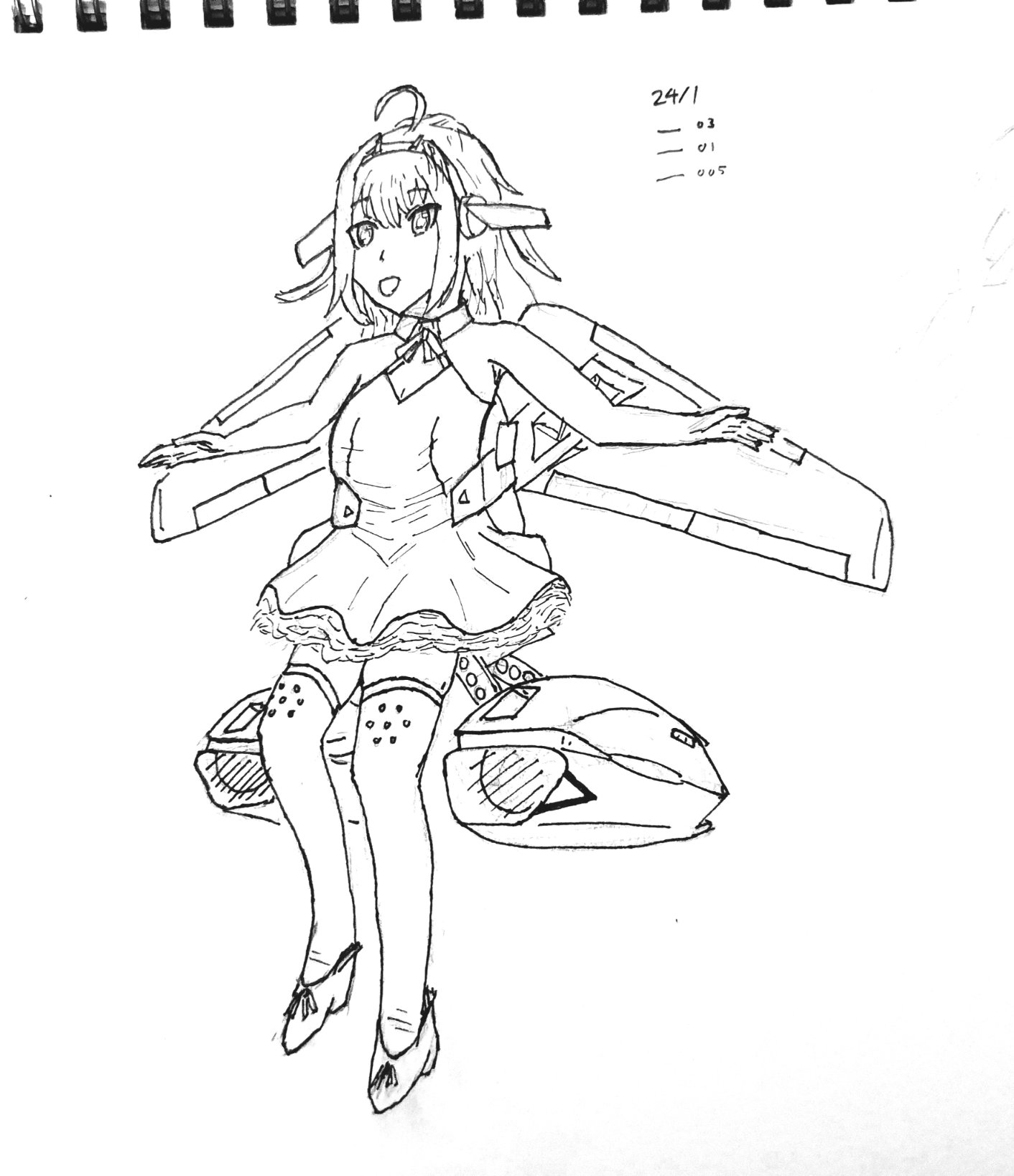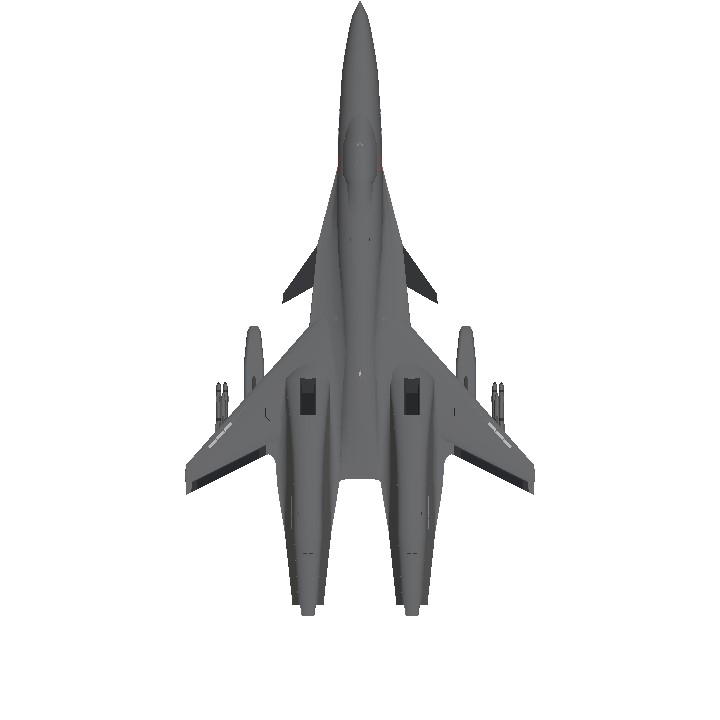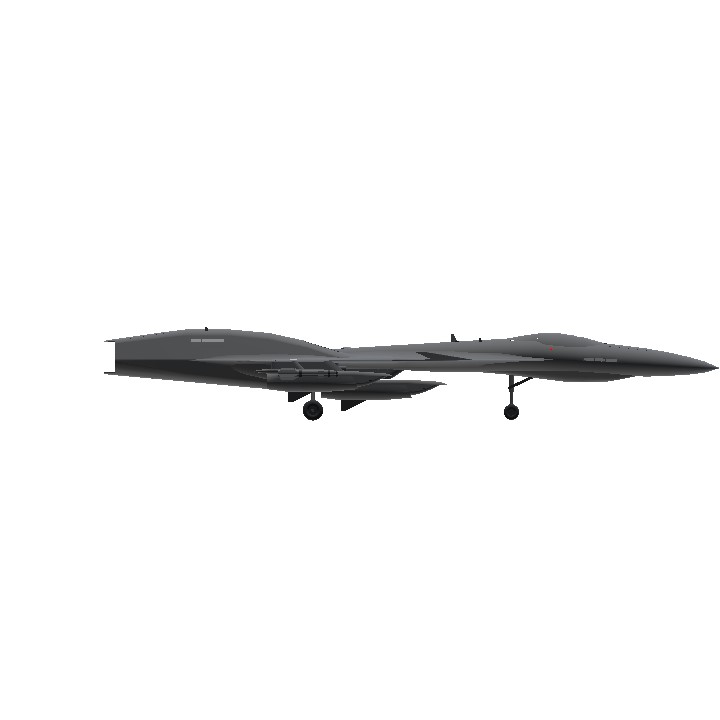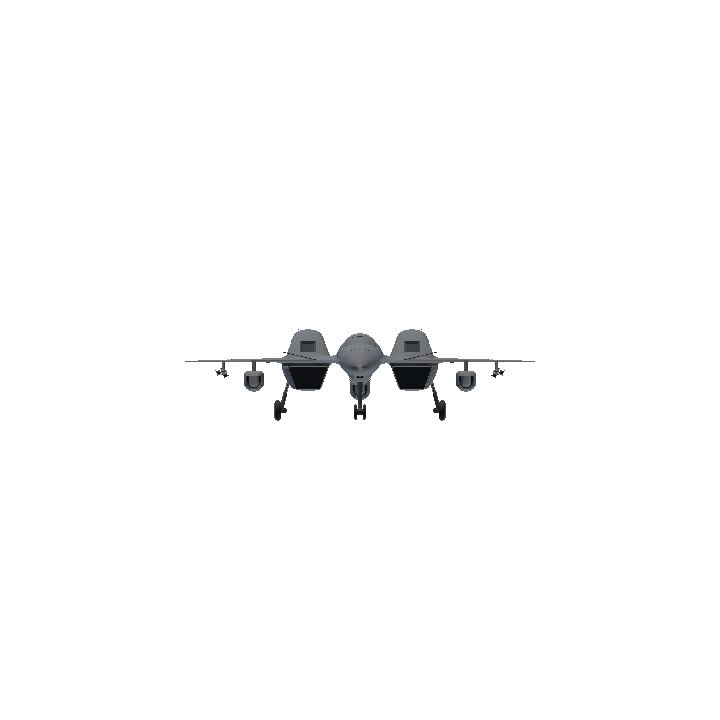NOT THE LATEST VERSION! DO NOT PUBLISH!
HAMEKA AQF-24 Type A
Unmanned Fighter/Interceptor
Rank: V

USER MANUAL
CREDITS
- 1Parts HUD by PlanariaLab. Minor modifications.
CONTROLS
Note: Controls are also available in the Craft Instructions.
VTOL - Lifting Configuration (rotate canards and elevators in the same direction)
AG1 - Disable Pitch Smoothing
AG2 - Force Speed Brake Extension
AG6 - Open Canopy
AG7 - Lights
TAKEOFF
- Rotate at 200 km/h (100 kts)
- Maximum pitch of 10 degrees to prevent striking the tail
- The effect of Lifting Configuration is negligible.
FLIGHT
- Use full throttle to engage afterburner.
- Use trim during low and high speed flight.
- Low- and medium-speed flight (under 1000 km/h or 500 kts) is characterized by high-alpha turns. It's unstable if making a sharp roll after a pitching turn.
LANDING
- Slow down to 300 km/h (150 kts)
- Use Lifting Configuration
- Maximum pitch of 10 degrees to prevent striking the tail
- Not suited for carrier operation.
DEV NOTES
Electro Pixy. It's another somewhat realistic design, based on engine and cockpit sketches.
The colors were born from messing about with gradients for visual effects in Flight Park Kirama. On a plane, it doesn't quite scream "airshow unit" (which is the lore), but somehow, it's pleasing and almost elegant?
colors.txt
It turns out that to make a G-limiter, you shouldn't use IAS. Reducing the KP coefficient with GS largely removes oscillations.
The high-alpha flight unfortunately makes it unsuitable for racing.
I got a good trick with labels when making this plane. On a curved label, you can use multiple lines of pipe characters | and show or hide lines with FT. This makes one-part "dynamic length cylinders", but the number of pipe characters may consume a lot of triangles. There are four such cylinders around the aircraft.
Cursed image
INFORMATION
The AQF-24 is a fighter and interceptor. The high-speed design excels most in BVR combat, and was fielded in both battlefield and arena scenarios.

Special "Comet" light blue gradient livery, as applied to one of HAMEKA AVR's demonstration units.
Specifications (AQF-24)
Length: 14.95 m
Wingspan: 8.50 m
Height: 2.24 m
Empty Mass: 15,100 kg
Safe Mass: 30,000 kg
Max. Loading: +15 G
Cruise Speed: Mach 2.18
Max Speed: Mach 2.72
Crew: 0 (fully automated or remote controlled)

Afterburner at night.
Production History (AQF-24)
Developers: AVIAROID VEHICLE RESEARCH UNIT (HAMEKA)
In Service: 2077-2110
Units Built: 60 (Type A) + approx. 220 (Type B)
Unit Cost: $32 million (Type A), $13 million and above (Type B)
Faced with doubts on the tactical planning capabilities of the aging AVIAROID AI platform, HAMEKA developed a long-range missile platform to complement its close-range dogfighters in the arena. This model would stay out of the main combat zone and launch data-link guided missiles, highly effective due to the number of allies in the area.
The privately-run "Type A" units saw success in their seven years of arena operation, until rule changes caused HAMEKA to withdraw them from many arena combat classes.
Use of the AQF-24 continued as "Type B" units were publicly available for sale. Operators could customize the engines, radar, and avionics bay equipment. Even space-going variants could be built from the parts offered. The Type B would join one of the hundreds of choices for those that could not afford articulating frames.
ARMAMENT
[ Mixed Weaponry Configuration ]
3x Advanced Large Multipurpose Missile (XLMM)
Beyond-visual-range hypersonic missile. Offers a large explosive radius at the cost of turn rate. Intended for air-to-air use, but can be used against ships due to the high explosive force.
It is usually guided by a radar-detecting seeker and allied data-link connection. Awareness of ally positions means that the XLMM can be launched into a "furball" with little risk of friendly fire. A later revision would allow the radar detector to be replaced by a optical object identification system to better distinguish between friend and foe.
The missile should be launched with enough airspeed, or it may fail to gain enough lift.
4x High Velocity Missile (HVM)
Multipurpose close-range missiles. It can travel up to Mach 3 and has a maximum loading of about 20 Gs.
Specifications
General Characteristics
- Predecessor !cf_dev0_14
- Created On Android
- Wingspan 27.9ft (8.5m)
- Length 57.4ft (17.5m)
- Height 13.1ft (4.0m)
- Empty Weight N/A
- Loaded Weight 19,999lbs (9,071kg)
Performance
- Power/Weight Ratio 20.226
- Wing Loading 103.2lbs/ft2 (504.0kg/m2)
- Wing Area 193.8ft2 (18.0m2)
- Drag Points 1092
Parts
- Number of Parts 577
- Control Surfaces 6
- Performance Cost 2,397

